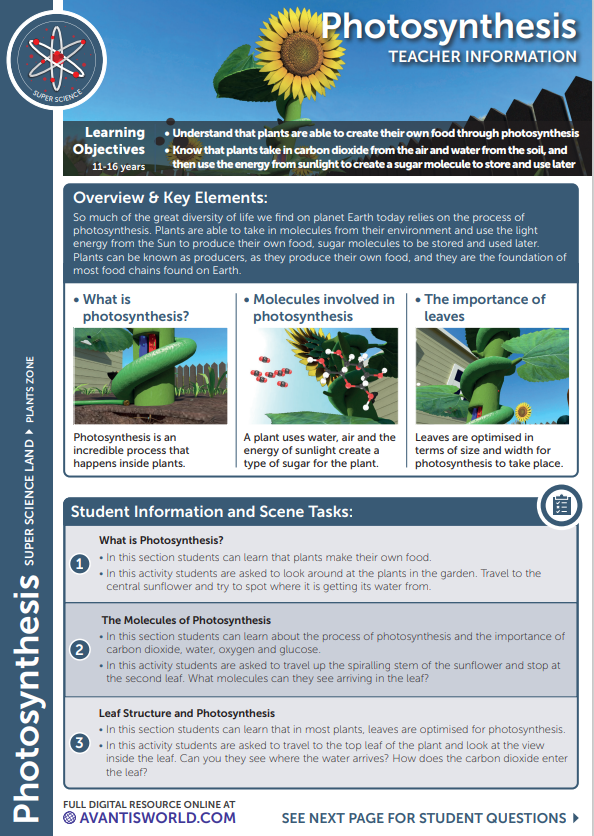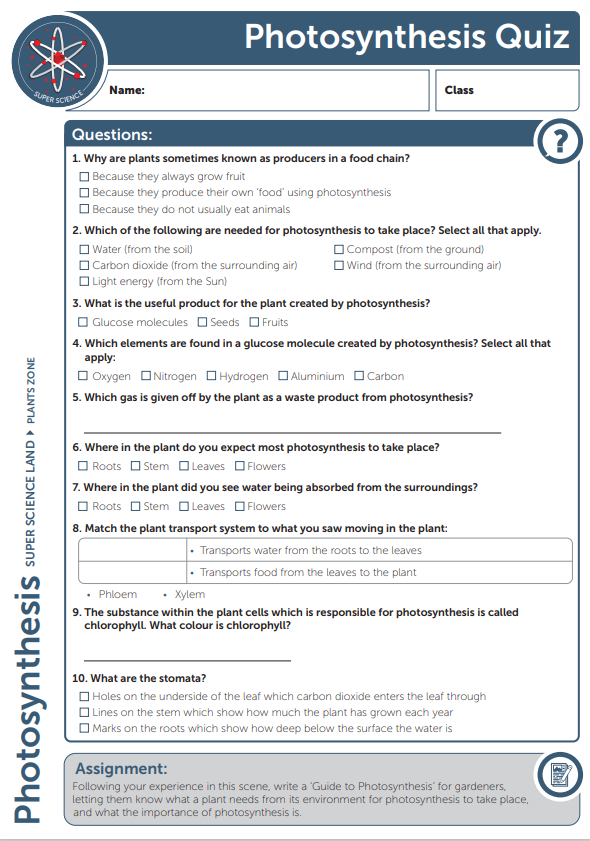 Loading...
Loading...
Initial language selection is based on your web browser preferences.
# Learning objectives 1: To understand that plants are able to create their own food through photosynthesis.{.info} 2: To be able to explain how plants take in carbon dioxide from the air and water from the soil, and then use the energy from sunlight to create a sugar molecule to store and use later.{.info} # What is Photosynthesis?{.objective .objective1} In this section students can learn that plants make their own food. In this activity students are asked to look around at the plants in the garden. Travel to the central sunflower and try to spot where it is getting its water from. # The Molecules of Photosynthesis{.objective .objective2} In this section students can learn about the process of photosynthesis and the importance of carbon dioxide, water, oxygen and glucose. In this activity students are asked to travel up the spiralling stem of the sunflower and stop at the second leaf. What molecules can they see arriving in the leaf? # Leaf Structure and Photosynthesis{.objective .objective3} In this section students can learn that in most plants, leaves are optimised for photosynthesis. In this activity students are asked to travel to the top leaf of the plant and look at the view inside the leaf. Can you they see where the water arrives? How does the carbon dioxide enter the leaf? # Teacher Resources **Download Teacher Notes** []( https://data.avncloud.com/activities/794037/files/Photosynthesis%20Teacher+Notes+1.pdf?date=1677509524&size=954666&md5=b1081b8c4ac060e9cefe3059a363f0fa) **Student Quiz Answers Document** [](https://data.avncloud.com/activities/794039/files/Photosynthesis%20Teacher+Notes+2.pdf?date=1677509626&size=474326&md5=f6e594ae45197d3bbe13f36127ed9c86) **Download Student Quiz Document** [](https://data.avncloud.com/activities/794040/files/Photosynthesis%20Teacher+Notes+3.pdf?date=1677509685&size=95889&md5=9131df95aadcc6fdbda7a22da6c606d9)